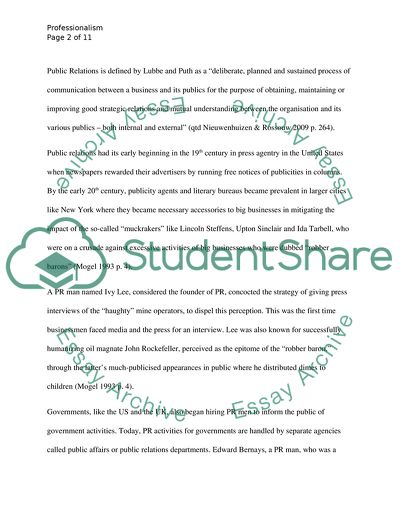Cite this document
(Professionalism in Public Relations Coursework Example | Topics and Well Written Essays - 2000 words, n.d.)
Professionalism in Public Relations Coursework Example | Topics and Well Written Essays - 2000 words. Retrieved from https://studentshare.org/marketing/1740997-discuss-professionalism
Professionalism in Public Relations Coursework Example | Topics and Well Written Essays - 2000 words. Retrieved from https://studentshare.org/marketing/1740997-discuss-professionalism
(Professionalism in Public Relations Coursework Example | Topics and Well Written Essays - 2000 Words)
Professionalism in Public Relations Coursework Example | Topics and Well Written Essays - 2000 Words. https://studentshare.org/marketing/1740997-discuss-professionalism.
Professionalism in Public Relations Coursework Example | Topics and Well Written Essays - 2000 Words. https://studentshare.org/marketing/1740997-discuss-professionalism.
“Professionalism in Public Relations Coursework Example | Topics and Well Written Essays - 2000 Words”. https://studentshare.org/marketing/1740997-discuss-professionalism.


